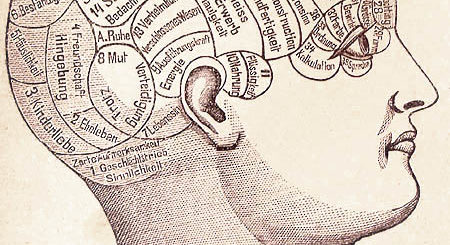Penny for your thoughts: the science of daydreaming

What goes on in your mind when it wanders to what you’ll have for tea; to memory fragments of Last Night; or just to a pit of nothingness where your focus is anywhere but the lecture you’re trying so hard to concentrate on? And is this daydreaming useful? Could it even be an indication of intelligence or creativity? In the words of psychologist Eric Klinger, “These desultory concoctions [(daydreams)], sometimes unobtrusive but often moving, contribute a great deal to the style and flavour of being human. Their very humanness lends them great intrinsic interest; but beyond that, surely so prominent a set of activities cannot be functionless.” Indeed, it seems that daydreams, and the brain networks that underlie them, serve many vital purposes. But what are these networks, and how did we discover them?
In 1929, Hans Berger first proposed that our brains are always active, even during rest and sleep, and that this baseline activity may be just as important as that which occurs during conscious thought. Recent research has taken this one step further with the discovery of a close-knit network of brain regions called the Default Mode Network. Interestingly, misdevelopment of this network may also increase an individual’s risk of developing a wide range of disorders, from autism to depression.
What is the Default Mode Network?
The DMN is a series of highly interconnected brain structures that spans the entire brain, and is thought to control daydreaming, autobiographical memory, and future conceptualisation. As the name suggests, it is activated when we enter ‘default/automatic mode’ — that is, when we do not focus on the task at hand, but instead passively allow our minds to follow an internal train of thought, unrelated to external sensations. Conversely, it is deactivated by goal-directed activity and deliberate thought. It has also been suggested that the DMN mediates empathy and several social behaviours. To read more about the DMN, click here1. So, how exactly does the DMN control daydreaming, or any of its other functions? First it’s important to understand how the DMN brain regions communicate with each other through brain waves.
How does the Default Mode Network communicate?
The DMN brain areas all emit low frequency brain waves called ‘alpha waves’. These brain waves are specific patterns of disturbances in local electrical fields around neurons caused by the rhythmic neural activity in the brain. When neurons are at rest, they are negatively charged relative to the extracellular brain environment. However, when they are activated, positively charged molecules flow into the neuron at one end (the cell body), which creates a charge difference between the now positive cell body, and the still negative neuron tail (the axon). This charge difference (called polarisation) disturbs the electrical fields that exist all around us. The neurons thus cycle between rest (fully negative) states and active (polarised) states. Importantly, when they are at rest, they cannot be activated. As many neurons of the cerebral cortex (the outer, functional layer of our brain) are parallel to each other and fire at the same, specific times, their cyclic activity creates large, rhythmic disruptions in the electrical fields which look like sinusoidal waves. We can see these waves in the electrical field by placing electrodes on a person’s scalp (a technique called electroencephalography), as seen in the image below. To find out more about the different brain waves seen in humans, see here2. The type of wave observed in the DMN during rest is an alpha wave – a wave with low frequency and high amplitude. Importantly, if neurons of one brain area send signals to neurons in another brain area, information will only be exchanged if the receiving neurons are cycling with the same pattern, and at the same time (alpha for the DMN). Thus, the DMN controls which of its regions are communicating by altering the timing of their alpha wave patterns, allowing for tightly regulated information exchange.
How does the Default Mode Network mediate daydreaming?
Simplistically, it can be said that the DMN conjures thoughts that don’t pertain to the immediate environment during rest or well-rehearsed tasks (e.g., you’re doing dishes, but thinking of what you want for dinner), and therefore allows for ‘freedom from immediacy’. This means that we needn’t think about every action we take, allowing us to ‘conserve’ attention for unfamiliar or difficult tasks and permits subconscious cognitive processing and daydreaming.
Why is daydreaming important?
There are many articles that claim daydreaming has different functions; some accurate, some less so. Generally, it is thought that it mediates future-planning, reconciliation of past (particularly autobiographical) experiences with current sensations for decision making, organisation of thoughts, and creativity. Interestingly, social cognition, the ability to analyse and predict the feelings and behaviours of others, is seen to involve the same DMN areas that are active in daydreaming. Moreover, the content of a person’s daydreams is thought to change over time in adaptation to new social environments, to involve people they are close to and to become less fanciful as they settle into such new social contexts. Therefore, some researchers have posited a link between daydreaming, learning social cues, and socialisation — however, whether this link is causative or correlative is debatable.
Aside from social functions, a study showed that pilots, who were required to constantly divert their attention between mentally demanding tasks, had increased DMN activity, resulting in a long-term increase in cognitive performance. Thus, the DMN, and by extension daydreaming, may also play a role in cognitive processes like problem-solving and triaging tasks for importance. To read more about this study, visit3.
The Default Mode Network, daydreaming and neurodivergence
Of course, excessive daydreaming and ‘freedom of immediacy’ can become a problem, specifically in impairing your ability to complete goal-directed tasks, such as studying for a test. Disrupted daydreaming and DMN activity is also thought to contribute to the pathology of several neurological disorders, including depression, obsessive compulsive disorder, schizophrenia, Alzheimer’s disease, and autism. For example, improper development of the medial prefrontal cortex, a key DMN area, has been linked to the over-attentiveness of some autistic patients to environmental stimuli, or to their difficulty to integrate social cues with previous experience, making social situations more challenging. Similarly, the medial temporal lobe, another DMN region, is one of the first to be affected in the progressive brain damage seen in Alzheimer’s, and could serve as an early marker for the disease. To find out more, visit4. These links are, however, still correlative, and causation is yet to be evidenced. For now, the DMN remains a promising route for research, and only time will tell for the role of the DMN in such conditions, and whether it can be manipulated in treatment.
So, how does daydreaming work? It’s complicated. But it seems that the Default Mode Network, a chain of interconnected brain areas that communicate via specific brain waves, is important. Not only does the network mediate daydreaming, but it may have a role in social behaviour, attention, and cognitive tasks. Consequently, many disorders involve the DMN, and research continues to further our understanding of its importance, and how we can use it in treatments.
Specialist-edited by Fathima Afsal
Copy-edited by Rachel Shannon
References
- https://www.bbc.co.uk/news/health-41720867#:~:text=A%20collection%20of%20brain%20regions,as%20driving%20a%20familiar%20route
- https://www.youtube.com/watch?v=gvpuOBezW0w&ab_channel=SciShowPsych
- https://brainworldmagazine.com/know-your-brain-the-default-mode-network-wakeful-daydreaming/
- https://nyaspubs.onlinelibrary.wiley.com/doi/full/10.1196/annals.1440.011?saml_referrer






